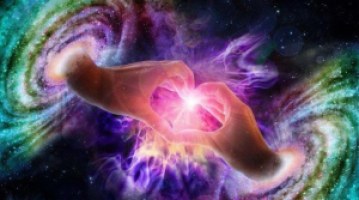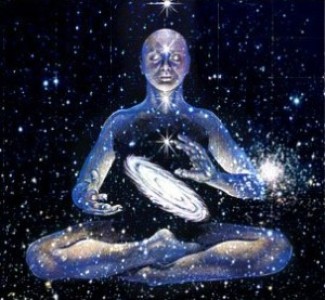In previous posts, we learned that there are forces of attraction that affect everything from self-attracting free energy to gravity, which is a function of “universal love,” according to Guy Needler. What is human love vs. divine love?
What is unique about humans on Earth?
“We call Earth “The Planet of Emotion” and it is unlike any other planet in the entire Universe because your range of emotions is so vast.” – Wendy Kennedy
Kennedy said we have the highest highs and the lowest lows and everything in between on Earth. In other parts of the galaxy, the emotional range is not nearly as varied. Some places may have only 5 or 12 different emotions in total, while a few species (e.g. Zeta) have eliminated their emotions altogether and lost their ability to procreate at the same time.
How do we create and sense emotions?
Kennedy said our thoughts create form (frequency), but our emotions vibrate it into being (amplitude) and determine how strongly we pulse it out to the universe in the now moment.
- Different emotions trigger sensations in different parts of the body. We all know how anxiety may be felt as “butterflies” in the stomach, while shame may evoke flushed cheeks.
- Researchers have shown how a given emotion lights up different areas of the body, that may feel increased (warm colors) or decreased (cool colors) sensations, as shown below. Image: Bodily maps of emotions (click to enlarge).
What is the range of emotions we have?
Karla McLaren wrote a book about “The Language of Emotions.” She defined an emotion as a physiological experience (or state of awareness) that gives you information about the world, and a feeling as your conscious awareness of the emotion itself.
- McLaren explained that some people have a disconnect between emotion and feeling. They have the emotion, but don’t know about it, because they try to ignore, suppress or avoid feeling it until it drags them into a more severe mood state.
- There is a healthy link between the ability to have, feel and identify your emotions, which are simply data that you get to interpret as to when, how and why they arise.
To help people identify and work with the information that each emotion and its level of intensity provides, she compiled a downloadable emotional vocabulary list.
For example, there are at least 40 different variations of “Happiness:”
- Soft Happiness: Smiling ~ Upbeat ~ Peaceful ~ Calm ~ Amused ~ Open ~ Friendly ~ Encouraged ~ Hopeful ~ Inspired ~ Jovial
- Mood State Happiness: Happy ~ Glad ~ Content ~ Optimistic ~ Cheerful ~ Joyful ~ Satisfied ~ Lively ~ Delighted ~ Rejuvenated ~ Pleased ~ Gratified ~ Excited ~ Gleeful ~ Merry ~ Playful
- Intense Happiness: Elated ~ Exhilarated ~ Manic ~ Giddy ~ Euphoric ~ Awe-filled ~ Blissful ~ Enthralled ~ Rapturous ~ Jubilant ~ Ecstatic ~ Overjoyed ~ Radiant.
“Your job as the partner of emotions is to feel the emotion, name it, ask the correct questions, and act in a way that is both emotional and rational.” – Karla McLaren
What’s love got to do with it?
What is human love? We all know some variations of love that we may express and experience with a lover, spouse, parent, child, pets, friends, favorite foods, beautiful nature scenes, etc.
- We tend to use the word “love” in many situations. But McLaren and others have said that love is NOT really an emotion.
- What we are calling “love” on Earth often is simply lumping together emotions, like excitement, passion, happiness, fear, anxiety or a some form of physical attachment (e.g. infatuation), according to Nora Herold.
McLaren said a healthy emotion appears just long enough to address an issue in the environment, then it shifts and recedes. That’s energy in motion (or e-motion) in the now moment or until you hit the reset button to change things. But love is its own category.
What is true unconditional or divine love?
“True love” is a neutral state of being, a vibration and a presence, where your heart expands to allow you to connect with any and all, according to Herold. She added: “When you’re in this state of divine love, then it doesn’t matter which version of Earth you’re existing on, and who you’re connecting with, you’re exactly where you need to be.”
Guy Needler said that love is greatly misunderstood, because “human love” is a minute subset of true love. True love is the experiential knowledge, that we are all one, and that we love others like we love ourselves.
- What we feel with a life partner, for instance, is but a small portion of the collectivity or oneness, that we experience with every single entity in this multiverse in a massively parallel way.
“Divine love is all around us. It pervades the multiverse and is therefore part of our very being. The Source is divine love and loves everyone and everything it created. We are the Source, and we are therefore in love, divine love, all of the time.” – Guy Needler
Final Thoughts
Needler asked us to focus on what we can experience in meditation, for instance, as a way to return to Source while in the physical world.
- When we are in communion or “coadunation” with Source, it means being one with the whole while remaining individual.
- We need not fear loss of individuality, because there is no loss.
“It is all contained in a single truth: THERE IS ONLY ONE OF US.” – Neale D. Walsch








